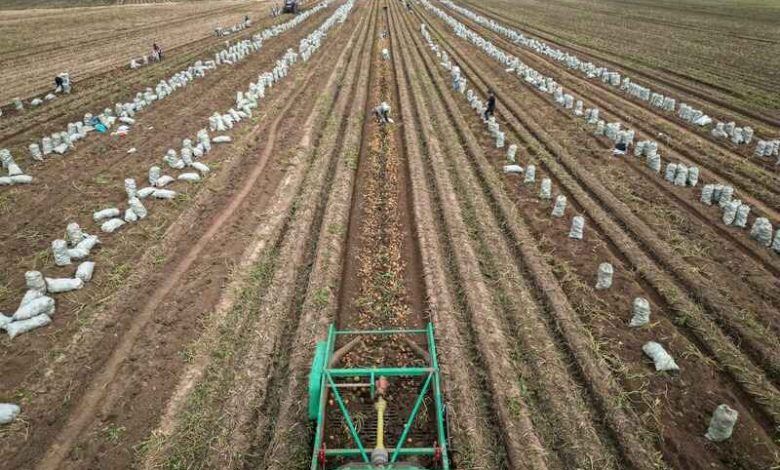Adapting Agriculture: China’s Plan to Climate Proof Potatoes

Molecular biologist Li Jieping and his colleagues gather a cluster of seven atypically small potatoes, one as little as a quail’s egg from a potted plant in a research facility northwest of Beijing.
The potatoes are a worrying indication of future food security because they are grown in conditions that mimic projections of greater temperatures at the end of the century.
The root vegetables which weigh only 136 grams are less than half the weight of a normal potato in China where the most common types are frequently twice as big as a baseball.
Because of their high output in comparison to other basic crops potatoes are essential to global food security and China is the world’s largest producer of them.
Yet they are especially delicate to heat and as a result of climate change brought on by emissions from fossil fuels, temperatures are rising to dangerously high levels and drought and flooding are getting worse.
Li, a researcher at Beijing’s International Potato Center (CIP) is spearheading a three year investigation into how the vegetable is affected by rising temperatures in an effort to safeguard food supply. His group is concentrating on the two most popular types in China.
Li said, “I worry about what will happen in the future.Farmers will harvest fewer potato tubers, it will influence food security.”
In an open access chamber that was set three degrees Celsius higher than the current average temperature in northern Hebei and Inner Mongolia, the higher altitude regions of China where potatoes are typically grown, Li’s team grew their crop for three months.
According to their research which was published this month in the journal Climate Smart Agriculture, the increased temperatures reduced potato yields by more than half while speeding up tuber growth by ten days.
According to a United Nations research published in October, the world might warm by up to 3.1 degrees Celsius over pre-industrial levels by 2100 under existing climate policy approaches.
Manager Wang Shiyi said, “The biggest challenge for potatoes this year is the heavy rain. It has caused various diseases and greatly slowed down the harvest progress.”
Before the next rainstorm, workers in Inner Mongolia scramble to collect potatoes that have been pulled up from the ground while holding white sacks.
Yakeshi Senfeng Potato Industry Company, a company that produces seed potatoes has made investments in aeroponic systems which allow plants to be grown in controlled environments in the air.
Higher yielding and less prone to disease, especially late blight which led to the Irish Potato Famine in the middle of the 19th century and flourishes in warm, humid climates are the potato kinds that farmers are requesting more and more.
“Some new and more aggressive (late blight) strains have begun to appear and they are more resistant to traditional prevention and control methods,” said general manager Li Xuemin explaining the Inner Mongolia based company’s strategy.
CIP, which has its headquarters in Lima, is working with the Chinese government to conduct the research in order to assist farmers in adjusting to the warmer and wetter weather.
To create heat tolerant types, workers in the greenhouse outside Li’s lab wipe pollen on white potato blooms.
According to Li, Chinese farmers will have to adjust within the next ten years either planting in the spring rather than at the beginning of the summer or relocating to even higher elevations in order to avoid the heat.
Li said, “Farmers have to start preparing for climate change. If we don’t find a solution, they will make less money from lower yields, and the price of potatoes may rise.”
